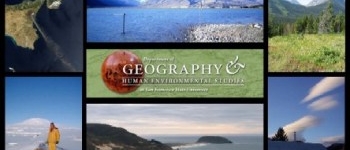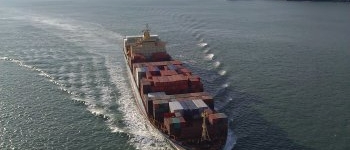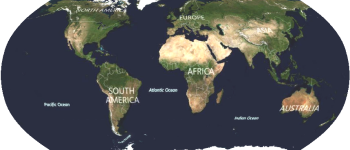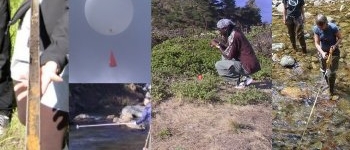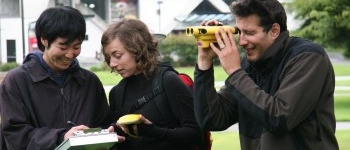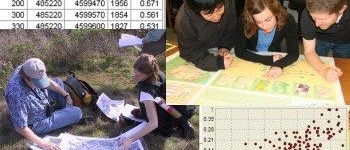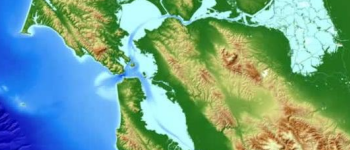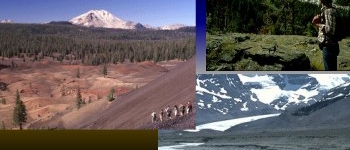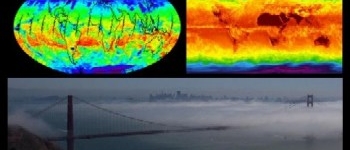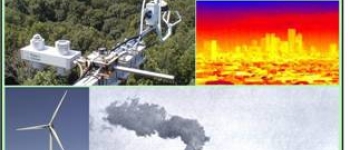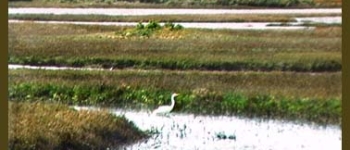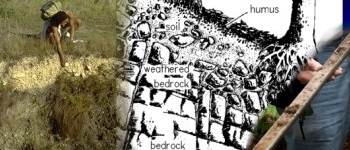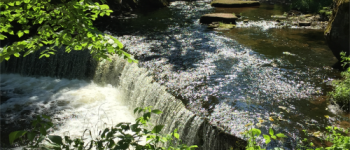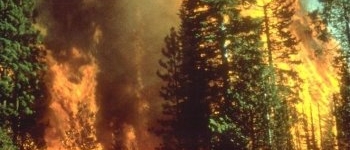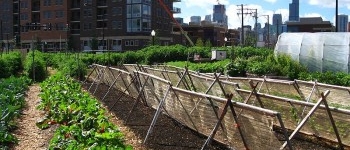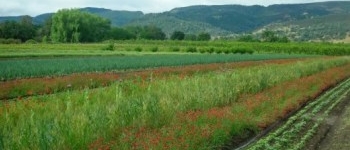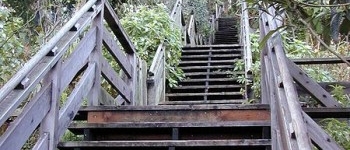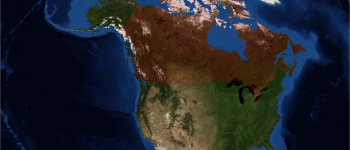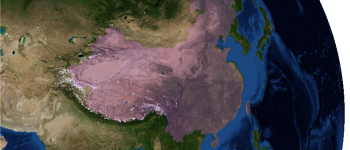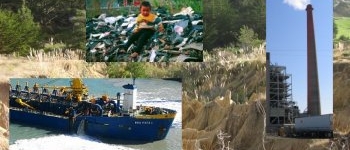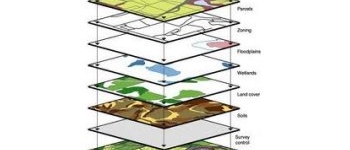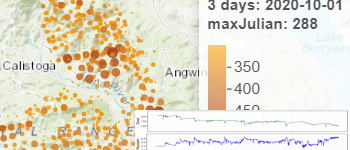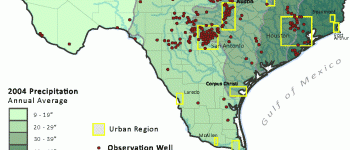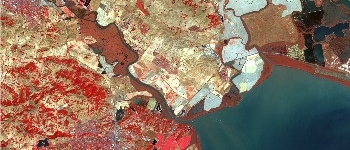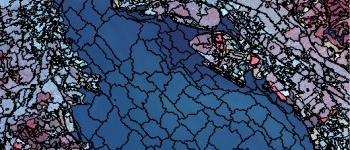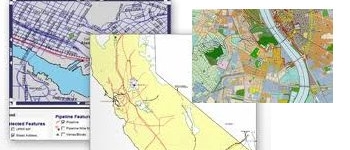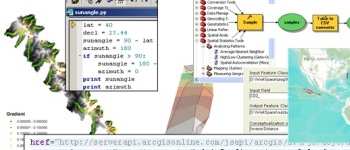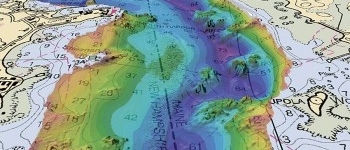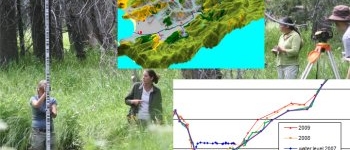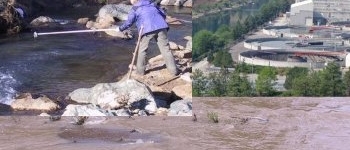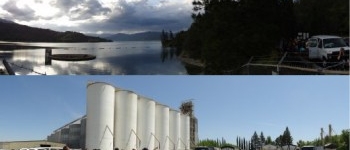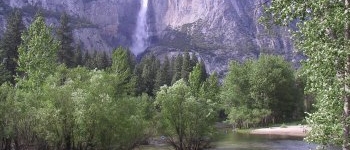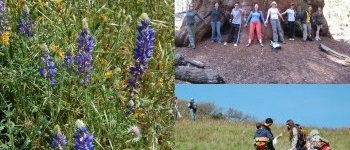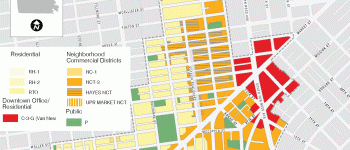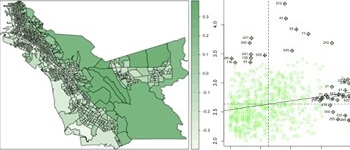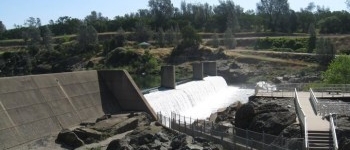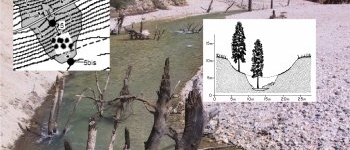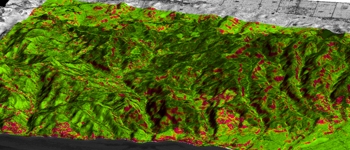Courses
| Course | Description |
Term | SFSU Bulletin | Image |
|---|---|---|---|---|
Geog 101 : Our Physical Environment
|
This course examines the physical processes that shape our planet including: elements of weather and climate; landform creation and change; formation and distribution of soils and biological systems; and the hydrologic cycle. Emphasis is placed on the strong links between processes, patterns and phenomena of our earth-atmosphere system. We explore these topics through lecture, reading, discussion, practical exercises and field work. |
Fall & Spring | Geog 101 Bulletin Description | /sites/default/files/2022-05/101_0.jpg |
Geog 102 : The Human Environment
|
Humans are at once shaping their landscape and being shaped by the landscape. This course encourages critical thinking about the relationships between humans and their environment and considers our own positions in the complex matrix of human-environmental interdependencies. We will explore a variety of sub-fields in human geography including economic, environmental, cultural, historical, political, urban and/or agricultural geographies. After developing a foundation for spatial analysis and understanding interdependencies, students are prepared to pursue more human geography courses and to ask geographic questions about contemporary issues and problems in the world today. |
Fall & Spring | Geog 102 Bulletin Description | /sites/default/files/2022-05/102.jpg |
Geog 107 : World Regions and Interrelations
|
|
Fall & Spring | Geog 107 Bulletin Description | /sites/default/files/2022-05/107continents.png |
Geog 160 : Introduction to Environmental Science
|
This course is an introduction to ecological and environmental systems, processes, and problems at global, state, and local levels. Through lecture and labs we will examine ecosystems, natural resources, and earth processes and their interactions with the human environment. |
Fall & Spring | Geog 160 Bulletin Description | /sites/default/files/2022-05/160_1.jpg |
Geog 203 : Geographic Measurement
|
|
Geog 203 Bulletin Description | /sites/default/files/2022-05/203.jpg | |
Geog 205 : Geographic Techniques
|
This course is an overview of geographic research methods and techniques. Topics covered include: research design, field and archival data collection, statistical analysis, topographic map reading, and introduction to remote sensing and GIS. Emphasis is on practical application of the techniques, skills, and methods presented. Fall & Spring. |
Fall & Spring | Geog 205 Bulletin Description | /sites/default/files/2022-05/205.jpg |
Geog 301 : Bay Area Environments
|
Bay Area Environments is an introduction to the complex nature of human and environmental evolution in San Francisco’s Bay Area. We will explore the origins of Native American & European settlement, landforms, water, weather, climate and ecosystems, anthropogenic changes across the region, and the future of the Bay Area environment. |
Fall & Spring | Geog 301 Bulletin Description | /sites/default/files/2022-05/geog301.png |
Geog 312 : Geography of Landforms
|
|
Fall | Geog 312 Bulletin Description | /sites/default/files/2022-05/geog312.jpg |
Geog 313 : Earth's Climate Systems
|
|
Fall | Geog 313 Bulletin Description | /sites/default/files/2022-05/313.jpg |
Geog 314 : Bioclimatology
|
|
Spring | Geog 314 Bulletin Description | /sites/default/files/2022-05/geog314.jpg |
Geog 316 : Biogeography
|
|
Fall & Spring | Geog 316 Bulletin Description | /sites/default/files/2022-05/316.jpg |
Geog 317 : Geography of Soils
|
|
Spring | Geog 317 Bulletin Description | /sites/default/files/2022-05/317img.jpg |
Geog 342 : Surface Water Hydrology
|
This course is designed to provide an introduction to surface water hydrology. We will explore surface water hydrological processes, focusing on how precipitation and snowmelt become streamflow, evapotranspiration, and groundwater. This course will provide students with a strong understanding of how water moves across Earth’s surface. Students will gain an in-depth knowledge of watershed hydrology. Students will be able to apply hydrologic principles in considering management of water resources to achieve social objectives. Also offered as ERTH 442. |
Spring | Geog 342 Bulletin Description | /sites/default/files/2022-05/geog342_500w.png |
Geog 402 : Human Response to Natural Hazards
|
Geography 402 focuses on collective human causes of and response to natural hazards. The emphasis is on the human-environmental interactions that may result in natural disasters to human lives and properties. The course has four objectives: (1) Understand the physical processes that may lead to detrimental outcome to human lives and properties, which sets the foundation for the second objective; (2) Survey historical hazard causes and coping strategies, i.e., why natural processes would become disastrous to human societies and how humans make trade-offs between gains and losses in hazardous environment, which leads to the third objective; (3) Evaluate current natural hazard mitigation with case studies of recent and/or major natural disasters in order to gain insights into the role of stakeholders in mitigation strategies, which establishes a framework for the fourth objective; (4) Apply basic concepts and tools for hazard mitigation, focusing on hazard prevention (management) instead of disaster (emergency) response, and developing a conceptual framework of sustainable development in human-environmental interaction. |
Fall | Geog 402 Bulletin Description | /sites/default/files/2022-05/Geog602_Wildfire_in_California.jpg |
Geog 421 : Future Environments
|
|
Fall & Spring | Geog 421 Bulletin Description | /sites/default/files/2022-05/421.jpg |
Geog 422 : Environmental Perception
|
|
Spring | Geog 422 Bulletin Description | /sites/default/files/2022-05/422.jpg |
Geog 423 : Geographic Perspectives on Gender
|
|
Spring | Geog 423 Bulletin Description | /sites/default/files/2022-05/Globe%2520courses%2520pic_0.png |
Geog 425 : Economic Geography
|
|
Spring | Geog 425 Bulletin Description | /sites/default/files/2022-05/Globe%2520courses%2520pic_0.png |
Geog 427 : Agriculture and Food Supply
|
|
Spring | Geog 427 Bulletin Description | /sites/default/files/2022-05/427.jpg |
Geog 430 : Transforming Food and Ag Systems
|
Exploration of movements for sustainable and urban agriculture, local and regional food systems, food justice and food sovereignty; consideration of ecological, economic, and political aspects of building alternative food systems locally, nationally, and internationally. Field trips and community service required. |
Fall | Geog 430 Bulletin Description | /sites/default/files/2022-05/Globe%2520courses%2520pic_0.png |
Geog 432 : Urban Geography
|
|
Fall & Spring | Geog 432 Bulletin Description | /sites/default/files/2022-05/858.JPG |
Geog 433 : Urban Transportation
|
|
Fall | Geog 433 Bulletin Description | /sites/default/files/2022-05/433.jpg |
Geog 434 : Geographies of Health and Health Care
|
|
Fall | Geog 434 Bulletin Description | /sites/default/files/2022-05/Globe%2520courses%2520pic_0.png |
Geog 435 : Geography of Global Transportation
|
|
Spring | Geog 435 Bulletin Description | /sites/default/files/2022-05/doubledeck%2520cropped.jpg |
Geog 437 : Bicycle Geographies
|
Bicycle Geographies topics include planning for bicycling in cities, bicycle culture, bicycle politics, and local, national, and global bicycling trends. There are numerous bicycle field trips in and around San Francisco. The class will also partner with SF State's Transportation Committee to survey bicycling trends at SF State and assist in the annual "bike to campus" event in May. |
Spring | Geog 437 Bulletin Description | /sites/default/files/2022-05/Bike%2520Geog.jpg |
Geog 445 : Geopolitics and Globalization
|
Physical and cultural geographic factors in and between political-territorial units. Effects of resource distribution, political motivations and ideologies on establishing territorial sovereignty. Also offered as IR 445. May not be repeated under alternate prefix. |
Spring | Geog 445 Bulletin Description | /sites/default/files/2022-05/Globe%2520courses%2520pic_0.png |
Geog 454 : San Francisco on Foot
|
|
Geog 454 Bulletin Description | /sites/default/files/2022-05/454.jpg | |
Geog 455 : Geography of Ethnic Communities
|
|
Fall & Spring | Geog 455 Bulletin Description | /sites/default/files/2022-05/Globe%2520courses%2520pic_0.png |
Geog 500GW : Physical and Human Dimensions of Climate Change
|
This writing- and research-intensive course guides students through an interdisciplinary investigation of climate change, including the causes, environmental and societal impacts, as well as mitigation and adaptation strategies and their implementation. The class bridges the traditional human and physical branches of geography and the environmental sciences, engaging a range of methods to deepen understanding of this complex environmental issue. |
Fall & Spring | Geog 500GW Bulletin Description | /sites/default/files/2022-05/Geog500bannerClip.jpg |
Geog 550 : Geography of the United States and Canada
|
|
Spring, odd years | Geog 550 Bulletin Description | /sites/default/files/2022-05/US_Canada.png |
Geog 552 : Geography of California
|
|
Fall & Spring | Geog 552 Bulletin Description | /sites/default/files/2022-05/california1-722649.jpg |
Geog 575 : Emerging China
|
|
Fall | Geog 575 Bulletin Description | /sites/default/files/2022-05/EmergingChina.png |
Geog 600 : Environmental Problems and Solutions
|
|
Fall & Spring | Geog 600 Bulletin Description | /sites/default/files/2022-05/600.jpg |
Geog 601/701 : Field Methods in Human Geography
|
|
Fall, odd years | Geog 601/701 Bulletin Description | /sites/default/files/2022-05/Globe%2520courses%2520pic_0.png |
Geog 602/702 : Field Methods in Physical Geography
|
|
Fall | Geog 602/702 Bulletin Description | /sites/default/files/2022-05/602.JPG |
|
Fall & Spring | Geog 603 Bulletin Description | /sites/default/files/2022-05/603.jpg | |
GEOG 604/704 : Environmental Data Science
|
Environmental data science is the array of methods for turning raw data into understanding as applied to environmental research. An exploratory data analysis approach is employed where visualization of data in time and space can lead to insight and hypothesis development. Major topics include time-series analysis, geospatial methods employing open-source tools in the R language, and employing innovations in graphics and maps. |
Fall | GEOG 604/704 SFSU Bulletin Description | /sites/default/files/2022-05/704.png |
Geog 606 : Cartography
|
GEOG 606 Cartography (Units: 3) |
Spring | Geog 606 Bulletin Description | /sites/default/files/2022-05/606.gif |
Geog 610 : Remote Sensing of Environment
|
|
Fall | Geog 610 Bulletin Description | /sites/default/files/2022-05/geog610.jpg |
Geog 611/711 : Remote Sensing of Environment II
|
Advanced remote sensing and digital image processing. Selected topics cover corrections of topographic effects, orthoimage and DEM generation from stereo images, advanced classification algorithms, and hyperspectral imaging using ERDAS Imagine and ENVI software. The class ends with object-oriented image analysis (OBIA) using eCognition. |
Spring | Geog 611/711 Bulletin Description | /sites/default/files/2022-05/geog711.jpg |
Geog 620/720 : Geographic Information Systems
|
|
Fall | Geog 620/720 Bulletin Description | /sites/default/files/2022-05/620new.jpg |
Geog 621/721 : GIS for Environmental Analysis
|
|
Spring | Geog 621/721 Bulletin Description | /sites/default/files/2022-05/geog621img.jpg |
|
Spring | Geog 625 Bulletin Description | /sites/default/files/2022-05/625.jpg | |
Geog 629 : Coastal and Marine Applications of GIS
|
|
Fall, odd years | Geog 629 Bulletin Description | /sites/default/files/2022-05/629.ESRI_.jpg |
Geog 642 : Watershed Assessment and Restoration
|
|
Fall | Geog 642 Bulletin Description | /sites/default/files/2022-05/642.jpg |
Geog 644 : Water Quality
|
This course explores the physical and social properties of water quality including analytical techniques and mitigation, state and federal regulations, public policy and environmental justice in local, regional, and global contexts. Topics include the social, physical, and chemical properties of water and pollutants. We will discuss the extent and significance of critical issues related to water quality in different environments. |
Spring | Geog 644 Bulletin Description | /sites/default/files/2022-05/644_0.jpg |
Geog 646 : The Geography of Marine Resources
|
|
Spring, even years | Geog 646 Bulletin Description | /sites/default/files/2022-05/646.jpg |
Geog 647 : Geography of Water Resources
|
This course explores water availability and the human development, use and abuse of water resources in local, regional and global contexts. Topics include basic hydrology; urban and agricultural water supply; legal, political, social, economic, biological, perceptual and environmental issues in water development; and comparison of goals and strategies for sustainable water resource management. Divergent solutions to water-related issues and controversies. Field trip to Sacramento Valley, Oroville and Whiskeytown Reservoirs. |
Spring | Geog 647 Bulletin Description | /sites/default/files/2022-05/geog647.jpg |
From the air we breathe, the food we eat, to the soil we walk on, we are inextricably part of the world around us. As human populations have grown, and our impact on the world around us has escalated, we have begun to “protect” areas from ourselves. Parks, wilderness and other protected areas are largely designed to limit human use and impacts; they are designed to preserve “natural” landscapes and allow biota to persist. In this course we will examine the emergence of protected areas over time, discussing their objectives and variety. The scope will be global with a particular focus on the US and our own Northern California region. There will be emphasis on both the social context of conservation and the vital role of science informing the process. At the end of this course you should have a richer understanding of why areas are protected, how they are managed, and what tradeoffs are involved in protecting them. |
Fall | Geog 648 Bulletin Description | /sites/default/files/2022-05/648.jpg | |
Geog 651 : San Francisco Bay Area Environmental Issues
|
|
Fall & Spring | Geog 651 Bulletin Description | /sites/default/files/2022-05/Menning%2520Geog%2520651%2520-%252020110506_may09%252060d_3857.JPG |
Geog 652 : Environmental Impact Analysis
|
|
Spring | Geog 652 Bulletin Description | /sites/default/files/2022-05/652.jpg |
|
Spring | Geog 657 Bulletin Description | /sites/default/files/2022-05/657.jpg | |
Geog 658 : Land-Use Planning
|
|
Fall & Spring | Geog 658 Bulletin Description | /sites/default/files/2022-05/658.gif |
Geog 666 : Geography of Garbage and Waste Reduction
|
|
Fall & Spring | Geog 666 Bulletin Description | /sites/default/files/2022-05/666.jpg |
Geog 685 : Projects in Teaching Geography 685
|
|
Fall & Spring | Geog 685 Bulletin Description | /sites/default/files/2022-05/Globe%2520courses%2520pic_0.png |
Geog 688 : Geographic Internship
|
Practical geographic assignments with sponsoring agencies. May be repeated when different internships are undertaken to a maximum of 6 units. |
Fall & Spring | Geog 688 Bulletin Description | /sites/default/files/2022-05/Globe%2520courses%2520pic_0.png |
Geog 690 : Senior Seminar in Geography & Environmental Science
|
|
Fall & Spring | Geog 690 Bulletin Description | /sites/default/files/2022-05/690_0.jpg |
Geog 699 : Independent Study
|
|
Fall & Spring | Geog 699 Bulletin Description | /sites/default/files/2022-05/Globe%2520courses%2520pic_0.png |
Geog 705 : Geographical Analysis
|
|
Spring | Geog 705 Bulletin Description | /sites/default/files/2022-05/705.jpg |
Geog 735 : Global Environmental Policy
|
|
Geog 735 Bulletin Description | /sites/default/files/2022-05/Globe%2520courses%2520pic_0.png | |
Geog 751 : Environmental Management
|
|
Fall | Geog 751 Bulletin Description | /sites/default/files/2022-05/751.jpg |
Geog 776 : Environmental Policy
|
Geog 776 Bulletin Description | /sites/default/files/2022-05/Globe%2520courses%2520pic_0.png | ||
Geog 785 : Projects in Teaching Geography 785
|
|
Fall & Spring | Geog 785 Bulletin Description | /sites/default/files/2022-05/Globe%2520courses%2520pic_0.png |
Geog 801 : Scope and Method in Geography
|
|
Fall | Geog 801 Bulletin Description | /sites/default/files/2022-05/801.jpg |
Geog 810 : Seminar in Physical Geography: Geomorphology
|
|
Spring, odd years | Geog 810 Bulletin Description | /sites/default/files/2022-05/810geomorph.jpg |
Geog 810 : Seminar in Physical Geography: Climatology
|
Various topics in climatology are investigated focusing on interaction between the surface and the atmosphere and additional topics to be selected according to student interests. |
Fall, odd years | Geog 810 Bulletin Description | /sites/default/files/2022-05/Globe%2520courses%2520pic_0.png |
Geog 810 : Seminar in Physical Geography: Biogeography
|
|
Spring, even years | Geog 810 Bulletin Description | /sites/default/files/2022-05/Globe%2520courses%2520pic_0.png |
Geog 815 : Seminar in Geographic Information Science
|
|
Fall | Geog 815 Bulletin Description | /sites/default/files/2022-05/815.jpg |
Geog 820 : Seminar in Cultural Geography: Human & Social Geography
|
|
Fall & Spring | Geog 820 Bulletin Description | /sites/default/files/2022-05/Globe%2520courses%2520pic_0.png |
Geog 832 : Seminar in Urban Geography
|
|
Fall, odd years | Geog 832 Bulletin Description | /sites/default/files/2022-05/Globe%2520courses%2520pic_0.png |
|
Spring, even years | Geog 858 Bulletin Description | /sites/default/files/2022-05/858_0.JPG | |
Geog 897 : Research Project Formulation
|
|
Fall & Spring | Geog 897 Bulletin Description | /sites/default/files/2022-05/Globe%2520courses%2520pic_0.png |
Geog 899 : Special Study
|
|
Fall & Spring | Geog 899 Bulletin Description | /sites/default/files/2022-05/Globe%2520courses%2520pic_0.png |
